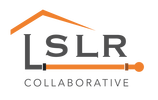|
EPIC
By Maureen Cunningham and Olya Egorov See the original blog. In the United States, there are an estimated 6-10 million lead service lines in approximately 11,000 communities that deliver drinking water to our kitchen taps, potentially exposing individuals of all ages to lead poisoning. Although a number of cities have committed to removing lead pipes in their communities, several municipalities lag behind, largely due to disparities in access to funding, as well as their capacity to manage a wide range of water quality issues in addition to lead. If the revised Lead and Copper Rule (currently subject to a regulatory freeze, while the EPA seeks additional public input) goes into effect, one of the biggest revisions affecting public water systems is the requirement that all water systems conduct an inventory of lead service lines, both public (owned by the water system) and private (owned by the homeowner or landlord) or otherwise prove the absence of lead service lines. Aside from the pending federal regulations and some existing state-level regulations, identifying, mapping, and conducting inventories of lead service lines is one of the first steps to launching a successful lead service line replacement program. The location and number of lead lines, for example, can help determine the most adequate funding strategy, including which grants or loans the municipality can apply for and the percentage of lead lines on the private side versus the public side of the line. Knowing the number and location of lead lines is a basic first step to addressing the problem. Comments are closed.
|
Have a suggestion for an article or blog to add?
Let us know! Type
All
Date
April 2023
|


 RSS Feed
RSS Feed